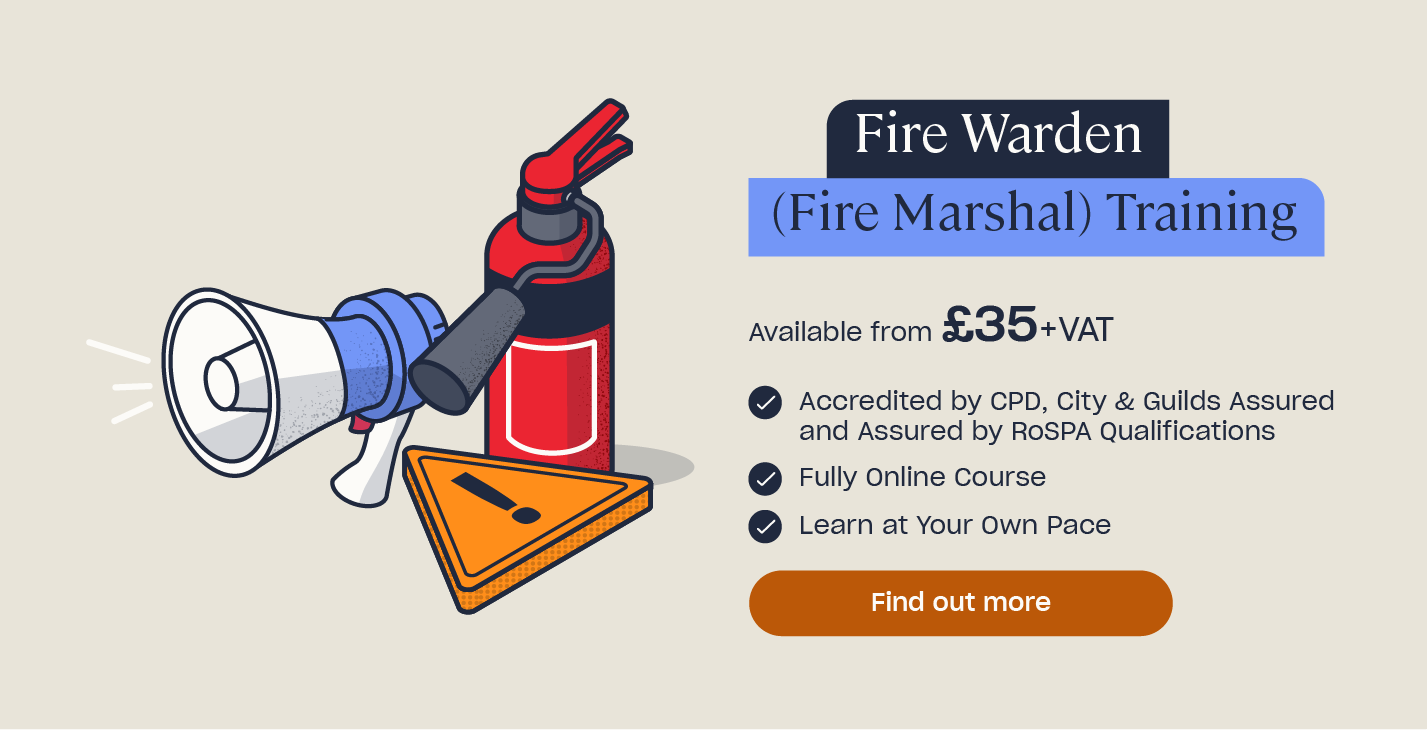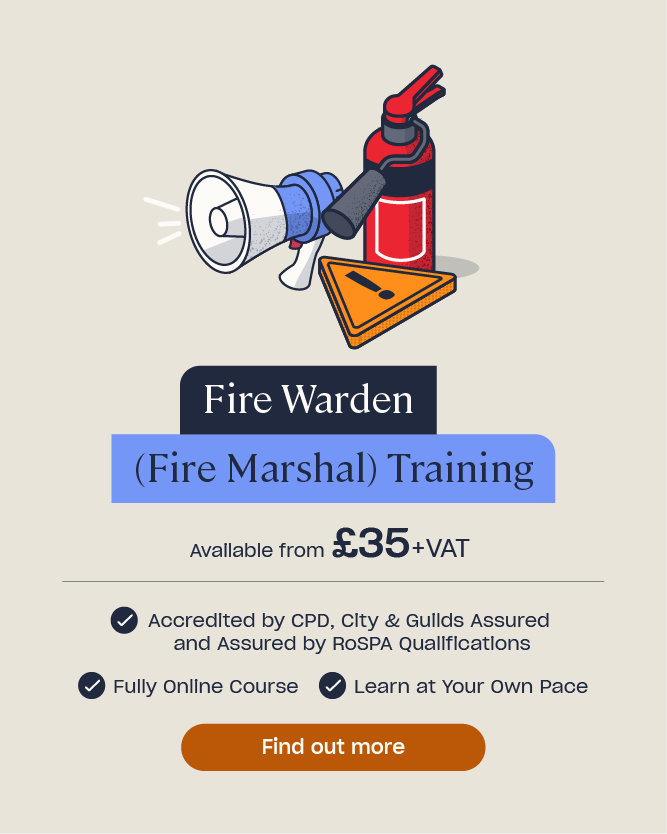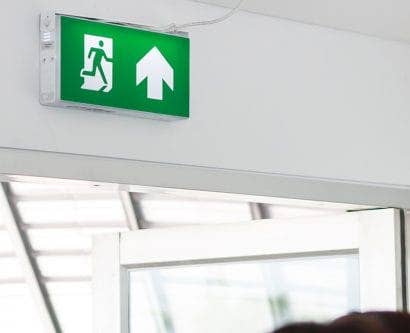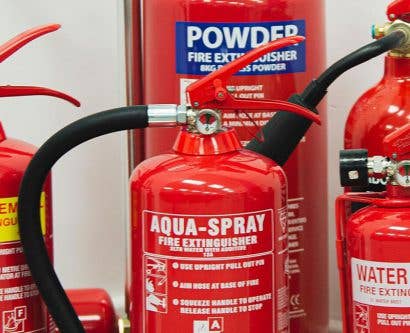The Fire Safety Responsibilities of a Fire Warden
What are the Responsibilities of a Fire Warden?
Do you know who the designated fire warden or fire marshals are in your workplace? Or are you taking on the role of fire warden? If that’s the case, do you know what your fire warden responsibilities are?
The importance of fire safety cannot be emphasised enough. Fires cause devastation to businesses in Britain every year. In fact, according to UK Government statistics, in 2022/23, there were 13,535 recorded fires in work premises and other non-residential buildings in England. Of this number, there were 15 fatalities and 808 non-fatal casualties. A high percentage of incidents occurred in industrial premises (such as manufacturing, warehouses, etc), retail premises, and food and drink premises.
Having designated fire wardens is crucial for helping people to evacuate safely and for maintaining good fire safety awareness in the workplace.
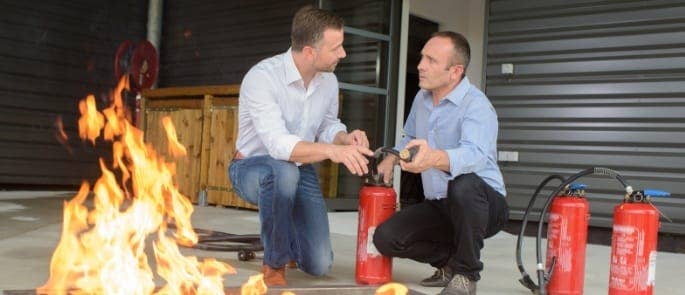
What Are My Duties as Designated Fire Warden?
While it’s your employer’s duty to physically implement fire safety measures, such as alarm systems, escape routes, fire extinguishers, etc., you play an important part in evacuation procedures and general fire safety awareness.
Your role involves monitoring fire safety at all times, actively following good fire safety practices, and taking action in the event of a fire (including leading the evacuation or fighting fire where necessary). You will also help to ensure that others follow the training and instructions they have received for fire safety.
Let’s take a look at some of your specific duties:
Although you play a part in general fire safety around the workplace, the most important aspect of your role involves being prepared for an actual fire and assisting others with evacuating. Sometimes people don’t react as expected and they look for leadership in an emergency, which fire wardens can provide.
Need a Fire Warden Training Course?
High Speed Training offers a convenient, online Fire Warden Training course, suitable for anyone who will be taking on the role of fire warden in their workplace.
Your Role During a Fire Evacuation
Your top priority will be ensuring that evacuation plans are effective and understood by everyone on the premises. You will be their guide in the instance of a fire. You will be the one who responds to the fire and will do all you can to minimise the risks it poses to everyone in the building.
During an evacuation, the actions you need to take can be broken down into 6 simple steps:
- Check that people are leaving the area via the safest route. After you or someone else has raised the alarm, you need to gently but firmly tell everyone to leave the area. You could use a whistle or loudspeaker if your premises is especially large and there are a number of people.
- Search the area. You will need to perform a full sweep of your designated area to ensure that no one has been left behind. Check isolated areas, refuges, toilets, and anywhere else someone could still be located.
- Take action to minimise the spread of fire and smoke. You should also do what you can to minimise the dangers posed by fire during an evacuation, as long as it’s safe to do so and you will still be able to evacuate safely. For example, you should close windows and doors to starve the fire of oxygen and reduce the spread of smoke.
- Assist people with evacuating when necessary. You should provide support to disabled and vulnerable people if necessary. This may include ensuring that other employees who are designated to help them are doing so, or organising others to stand in.
- Decide whether or not you can fight the fire safely. Only fight small fires that are within your area, if it’s safe to do so, if you are suitably training to do so, and you have the correct extinguisher. Never attempt to tackle a large fire or one that is spreading, and do not allow anyone else to do so. Fighting a fire when you are not trained or knowledgeable and if it’s getting out of control could not only put yourself at risk, but others too.
- Report to assembly points and take roll calls, as well as report to and cooperating with others who are also in charge of fire safety. Go to the assembly point once you’ve evacuated the building; do not return inside or allow anyone else to do so. If anyone is unaccounted for or there was someone who couldn’t or wouldn’t leave, inform the emergency services. Working together with other fire wardens (if your organisation has several) and with the emergency services will make for a much safer, more thorough evacuation. Give the emergency services any details they ask for if you know them, such as the location of the fire and its source.
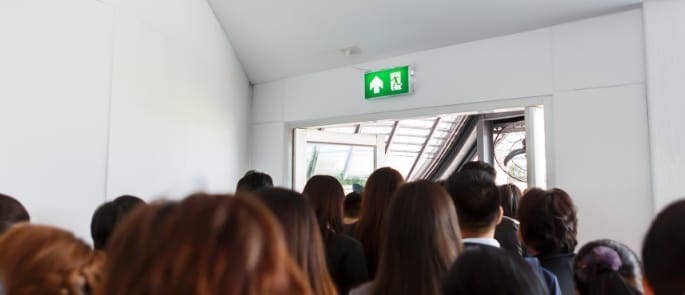
What’s important during a fire evacuation is that you do everything you can to not put others at risk and do not put yourself in danger. Everyone needs to remain calm; panic will only make matters worse. You need to remain level headed and instil trust in those you are in charge of evacuating.
In doing so, you will be capable of fulfilling your role as fire warden. By knowing how to uphold fire safety best practices, you can take appropriate action to help ensure that nobody comes to harm.
Further Resources:
- Fire Warden Quiz
- How Many Fire Wardens Does My Business Need?
- Fire Warden Training
- Information about the Fire Triangle and Tetrahedron


